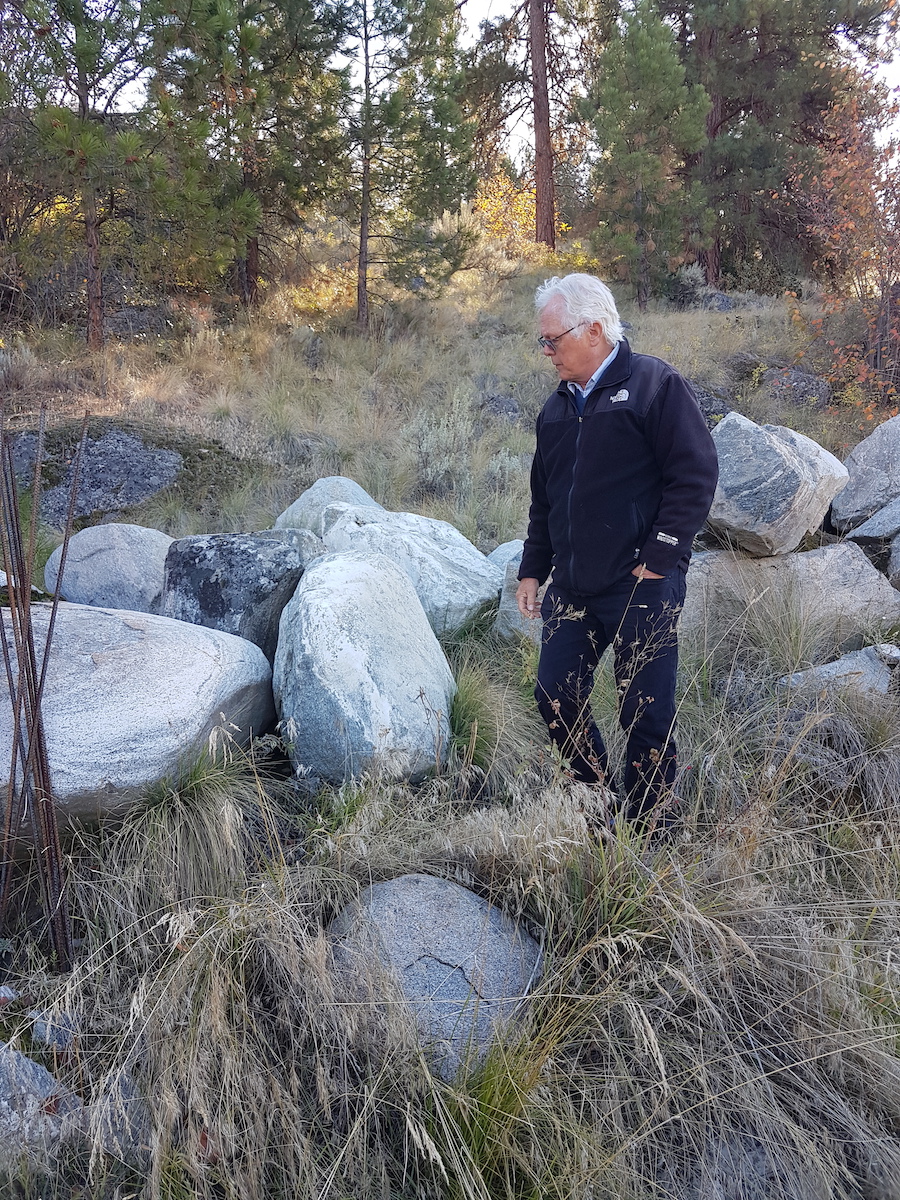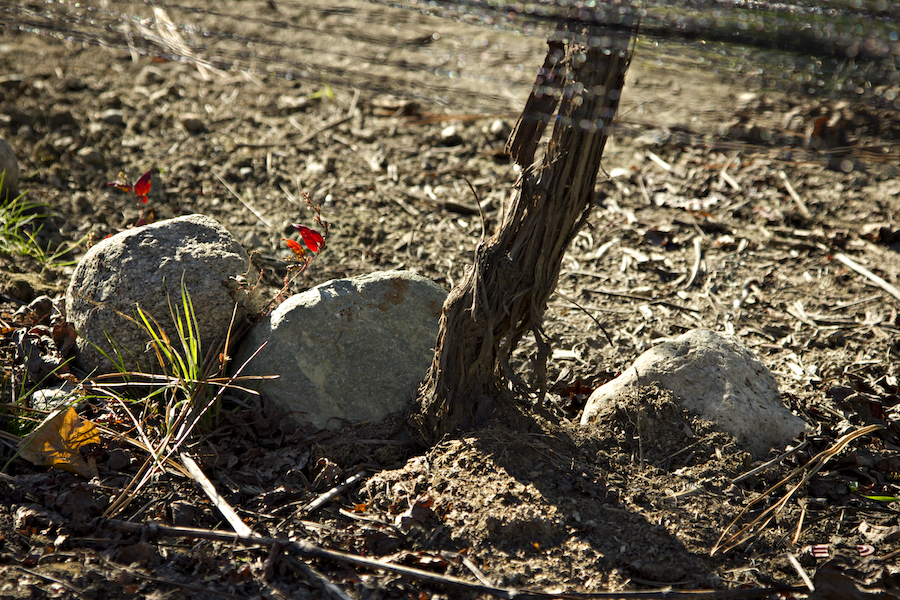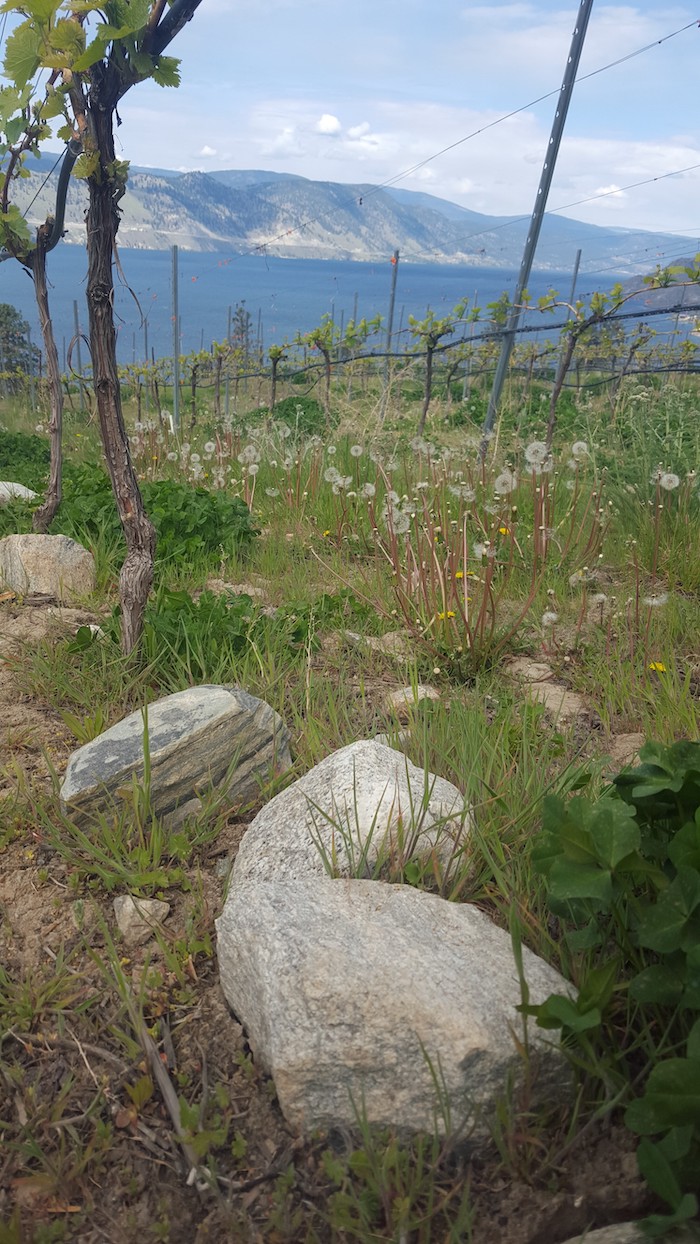Vineyard

Site
A biologist was hired to appraise the soil regarding existing minerals and pH levels before the land was cleared and grapes were planted.
The vineyard is perfectly situated on the north Naramata Bench with a south westerly exposure on the east side of Okanagan Lake. This location allows for the reflective benefits of the lake during the hot growing season and its moderating effect during the winters.
The vineyards offer an excellent slope for water and air drainage, as well as great sun exposure, which is especially important in the fall ripening season.
“It is a three to five-year project that will build a connection between the vines and the land so that Coolshanagh can become a wine place. Lucky for them Skip Stothert says ‘hard work is the easy part of growing great wine,’ which means it’s game on.” – Anthony Gismondi, The Vancouver Sun
Soil
Sustainability
Research
Soil
The property rises above the lake to the more common silt and clay-type soil but within 100 yards it transcends into rocky boulder-laden glacial soil. That stone is filled with limestone and calcium carbonate, which feeds the vines, granting steely and minerally flavours in the finished wine.
Elements of decomposed mother rock and seams of alluvial calcarious gravel combine to allow for good drainage, critically important to allow the roots to grow deep underground in search of water.
Sustainability
Coolshanagh Vineyard is committed to sustainable farming and is in transition to total organic viticulture. The winery uses organic chicken manure as fertilizer which enriches the soil with nitrogen. In 2014, a nitrogen-rich red clover was introduced as a cover crop in the vineyard that will help control weed growth while providing nutrients to the soil. Metal posts are used exclusively in the vineyard and all sprays are organic. After crush, the leftover grapes remain at Okanagan Crush Pad to be turned into compost.
In 2014 renowned terroir specialist Dr. Pedro Parra visited the vineyard and observed that Coolshanagh offers some of the best exposure and soil structures for grape growing he had seen in the Okanagan so far. He noted that the soil is much like the Burgundian soils of Meursault, co-incidentally being on the same latitude of Coolshanagh. Based on the observations of soil structure and clones planted, he has prescribed an irrigation regime and a precision viticulture approach to coincide with the transition to organic farming. Dr. Parra visited most recently in August 2015, where he further recommended a discing and tilling regime that would expose the rocky limestone, forcing the roots down further in search of nutrients, lessening the need for added inputs.


Research
Skip and Judy conducted research that showed Chardonnay and Pinot Noir as the best-suited varietals to be planted their northern Naramata Bench site.
In 2003, the Stotherts began clearing two acres of land of what would ultimately become Coolshanagh Vineyard, eventually expanding to ten. Research again signaled the ideal Chardonnay clones, which ended up being a selection of Dijon Clone 548 (low yielding, small & loose clusters with high sugar potential, complex aromatics and concentrated length), 95 (larger berries producing a rich and balanced wine with great minerality and texture) and 96 (balanced vigour with high quality berries that offer elegant aromatics). These were all planted in 2004. Additional rows of Clone 76 (classic representation of the variety, with medium yields and balanced structure and aromas) were planted in 2009.
Pinot Noir was planted on the property in 2009, mostly to Clone 91. An additional planting of small-berried Clone 943 occurred in 2011. Both clones are known for their potential for powerful red berry intensity of flavours.
